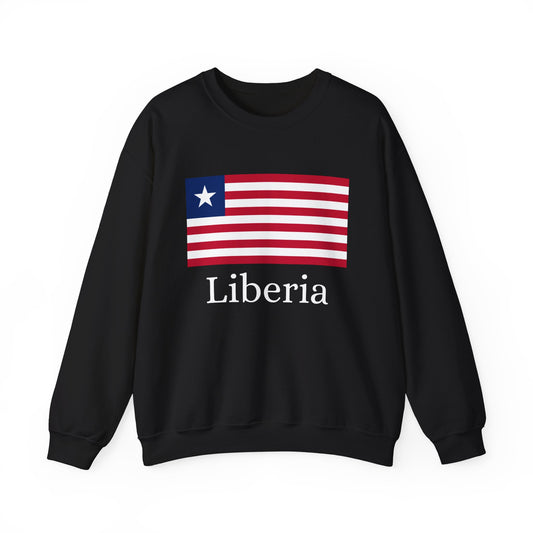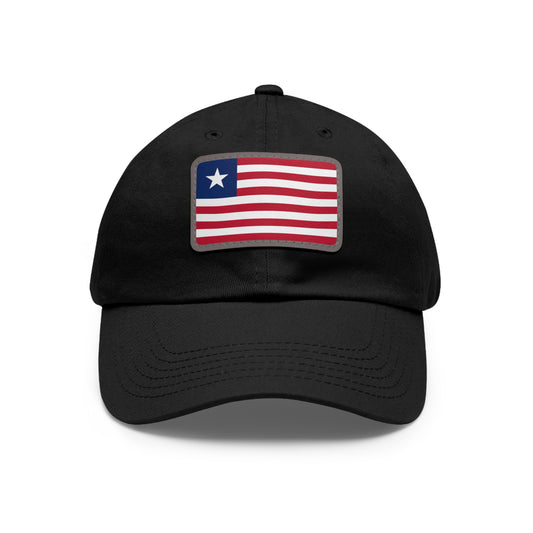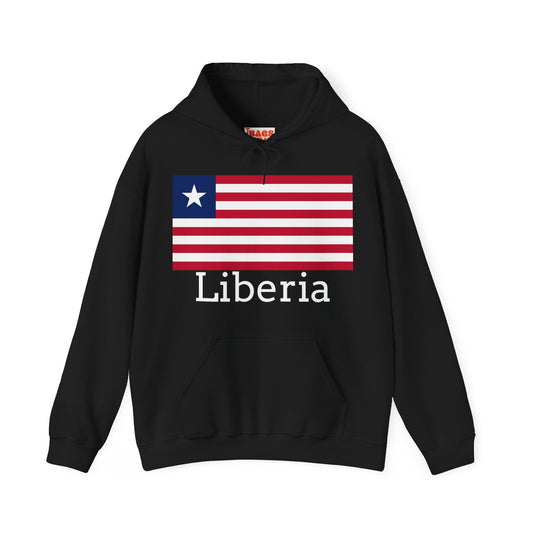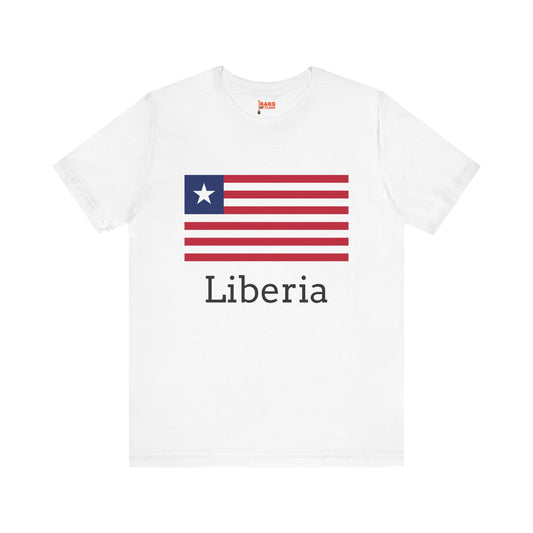-
Liberia Flag Sweatshirt
Regular price $34.15 USDRegular priceUnit price / per -
Liberia Sweatshirt
Regular price $34.15 USDRegular priceUnit price / per -
Liberia Pillow
Regular price $22.65 USDRegular priceUnit price / per -
Liberia Leather Patch Hat
Regular price $18.85 USDRegular priceUnit price / per -
Liberia Mug
Regular price $11.65 USDRegular priceUnit price / per -
Liberia Trucker Cap
Regular price $14.90 USDRegular priceUnit price / per -
Liberia Hoodies
Regular price $34.40 USDRegular priceUnit price / per -
Liberia T-shirts
Regular price $22.79 USDRegular priceUnit price / per -
Liberia Flag on Hoodies
Regular price $34.40 USDRegular priceUnit price / per -
Liberia Flag on T-shirt
Regular price $22.79 USDRegular priceUnit price / per
Collection: Liberia
The Liberia flag symbolizes pride and identity for the people of this West African nation. With its unique design and colors, the flag holds historical significance and represents the values and aspirations of the Liberian people.
Overview of the Liberia Flag's Design and Colors

The flag of Liberia showcases a striking and symbolic array of colors carefully chosen to reflect the nation's values and history. It features eleven horizontal stripes that alternate between red and white, starting with red at the top and ending with red at the bottom. These stripes are complemented by a square blue field in the canton, which houses a solitary white star. This arrangement is not just visually appealing but laden with deep meaning. The color red stands for the bravery and courage that underpins the spirit of the Liberian people, while white symbolizes the purity of their intentions and the moral excellence they strive for. The blue square represents the African continent's loyalty, justice, and perseverance, acting as a backdrop for the white star. The white star, radiant and solitary, signifies the light of freedom shining over the nation and its unique status as the first independent republic in Africa. This carefully thought-out design and color scheme is a daily reminder of Liberia’s enduring values and historic journey toward independence and sovereignty.
Historical Context: The Evolution of the Liberia Flag

Adopted on August 24, 1847, the Liberia flag has remained a steadfast symbol of the nation's values and aspirations since its inception. Its design and colors have stood the test of time, echoing the country's commitment to its founding principles. This adoption marked a significant event in Liberia’s history shortly after the government declared independence from the American Colonization Society. The resemblance to the United States flag reflects the historical ties between Liberia and the USA, as freed American and Caribbean slaves founded Liberia.
Despite the pressures and changes over centuries, the essential design of the flag has persisted, mirroring the enduring spirit and resilience of the Liberian people. The flag has witnessed Liberia’s challenges and achievements, serving as a beacon of national pride and unity. Its constancy is a testament to the nation’s unwavering dedication to the ideals of liberty and democracy, making it more than just a national emblem but a symbol of Liberia’s ongoing journey toward progress and sovereignty.
Symbolism: Unraveling the Meanings Behind the Liberia Flag
The Liberia flag's rich tapestry of colors and elements embodies a profound narrative of freedom, bravery, and purity. The eleven horizontal stripes, oscillating between red and white, symbolize the original signatories who declared Liberia's sovereignty, underscoring the foundational pillars of unity and sacrifice that have shaped the nation. The stark white star, set against the blue square, symbolizes hope and freedom. This lone star represents Liberia's status as a beacon of liberty in Africa, marking its historical significance as the continent's first independent republic. It highlights the guiding principles that led to its establishment and continues to guide the nation forward. The blue square anchors the star and symbolizes the African continent, suggesting Liberia's commitment to justice, perseverance, and solidarity with its African brethren. Each color and symbol woven into the flag narrates a chapter of Liberia's quest for independence, struggles, and aspirations, making the flag a perpetual reminder of the nation's identity and values.
Current Relevance: The Liberia Flag in Today's World
In contemporary Liberia, the flag remains a ubiquitous symbol, deeply embedded in the fabric of national life. Its presence is especially pronounced during patriotic celebrations, such as Independence Day, and in more solemn national commemorations, reflecting the Liberian people's collective memory and shared aspirations. In military contexts, the flag is highly esteemed, often leading processions and adorning uniforms, signifying honor and allegiance to the nation's foundational principles. Despite its revered status, the Liberia flag has yet to be immune to scrutiny and debate.
Discussions have emerged concerning its symbolism, with some voices advocating for updates or modifications to ensure the flag resonates with the evolving identity and diversity of Liberia's contemporary society. These debates reflect a broader conversation about national heritage and progress, underscoring the flag's role as a living symbol that must adapt to reflect the dynamic spirit of its people. Through these dialogues, the Liberia flag continues to serve as a historical emblem and a catalyst for reflection on what it means to be Liberian in the modern era, engaging citizens in meaningful discourse about their country's path forward.
Additional Facts: Protocols and Lesser-Known Aspects of the Liberia Flag
Displaying the Liberia flag involves a set of established protocols that reflect the country's respect and reverence for this national symbol. These protocols dictate that the flag must be treated with the utmost care, ensuring it never touches the ground as a sign of disrespect. Additionally, using the flag for commercial purposes is strictly prohibited, preserving its dignity and significance beyond mere ornamentation or advertising. In a ceremonial context, the flag is meticulously raised and lowered at government buildings and military establishments, symbolizing the beginning and end of each day's official duties and affirming the nation's allegiance to its foundational values.
An exciting facet of the Liberia flag is its deep-rooted connection to African American history. The flag's design was conceived by a committee of African American settlers who were part of the colonization efforts in Liberia during the 19th century. This link emphasizes the cultural and historical ties between Liberia and the United States, manifesting in the flag’s resemblance to the U.S. flag but with distinctive elements that celebrate Liberia's unique identity and heritage. This connection underlines the flag’s role in symbolizing national pride and a shared history of struggle, liberation, and the pursuit of freedom.
Such insights into the protocols and the lesser-known historical connections of the Liberia flag enrich our understanding of its significance. They remind us that the flag symbolizes the nation's sovereignty and unity and is a beacon of its rich, intertwined histories and enduring values.




















